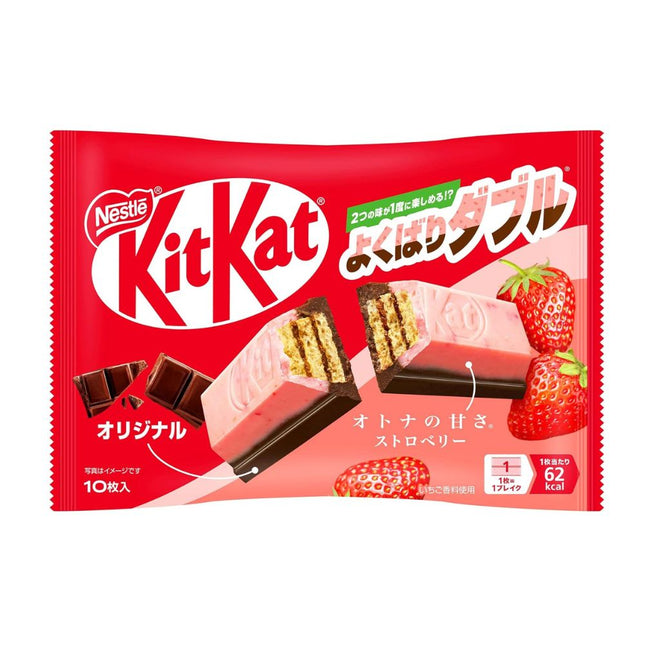Explore Kawaii Japanese Snacks: Cute Treats You’ll Love
When it comes to kawaii Japanese snacks, you're in for a fun, adorable, and delightful treat. The word “kawaii” means “cute” in Japanese, and it’s a huge part of the country’s pop culture. From cute food to kawaii characters and packaging, Japan’s snacks are a feast for the eyes as well as the taste buds. Let’s dive into the world of kawaii Japanese snacks and discover why they’re so beloved by fans worldwide!
What Is Kawaii and Why Is It So Popular in Japan?
The concept of kawaii in Japan goes beyond just being cute. It reflects a certain kawaii aesthetic that can be found in everything from fashion to food. Whether it’s pastel colors, playful designs, or anime characters, kawaii in Japan embraces everything soft, sweet, and heartwarming. You’ll often find kawaii food at bakeries, restaurants, and even convenience stores, with adorable packaging and playful themes that appeal to both children and adults alike.
The Influence of Kawaii Culture on Japanese Snacks
In Japan, kawaii candy and snacks are a huge part of daily life. This "culture of cuteness" has been shaped by the rise of anime and manga, kawaii characters, and Japan’s love for visual appeal. From cute manga characters to iconic figures like Totoro and Studio Ghibli creations, the influence of kawaii snacks can be found everywhere.
Kawaii Japanese Snacks You Must Try
Whether you're a fan of the whimsical or just love cute food, there’s a wide variety of kawaii snacks to explore at Konbini Stop. Here are some of our most popular snacks that embrace the adorable side of Japanese culture:
1. Sanrio Hello Kitty Snacks
One of the most recognizable faces of kawaii style, Hello Kitty, has made her way into countless delicious treats. Our collection of Sanrio snacks includes Hello Kitty gummies, biscuits, and candies that are almost too cute to eat. These sweet snacks perfectly reflect the kawaii aesthetic and make for great gifts or party favors.
2. Totoro Cream Puffs and Floresta Donuts
Although not available at Konbini Stop, some of the most famous kawaii food in Japan includes Totoro cream puffs and adorable animal-shaped donuts from Floresta Donuts. These desserts are inspired by beloved anime characters like Totoro from Studio Ghibli and are the perfect example of how kawaii in Japan brings food and art together.
Kawaii Snacks and the Power of Packaging
One of the main reasons kawaii Japanese snacks stand out is their packaging. Japan is known for its attention to detail, and kawaii characters are often featured on snack boxes, candy wrappers, and even drinks. This makes Japanese snacks not only delicious but also highly collectible. Whether it’s pastel colors, kitten writing, or anime characters on the label, the packaging is as delightful as the treats inside!
The Kawaii Aesthetic in Japanese Snacks
The kawaii aesthetic in snacks comes from a mix of playful designs, colorful shapes, and unique flavors. Some snacks feature intricate designs like edible flowers or cute food shaped like animals, while others use fun colors and textures to create a sensory experience. Whether you’re into candy kawaii food or savory treats, there’s no shortage of adorable snacks to try.
How Kawaii Snacks Reflect Japanese Pop Culture
In Japan, kawaii fashion and food go hand in hand. Just as the concept of kawaii has shaped clothing trends, it has also influenced how snacks are presented. The word kawaii has become synonymous with anything charming or cute, and this has extended to food. With designs that are inspired by anime characters and popular mascots, kawaii snacks bring a bit of joy and playfulness to everyday life.
Shop Kawaii Snacks at Konbini Stop
At Konbini Stop, we offer a wide selection of kawaii Japanese snacks. Whether you're looking for Sanrio snacks, Hello Kitty treats, or just some cute kawaii candy to brighten your day, we have everything you need. Shop now and bring a little piece of kawaii culture into your snack collection!















